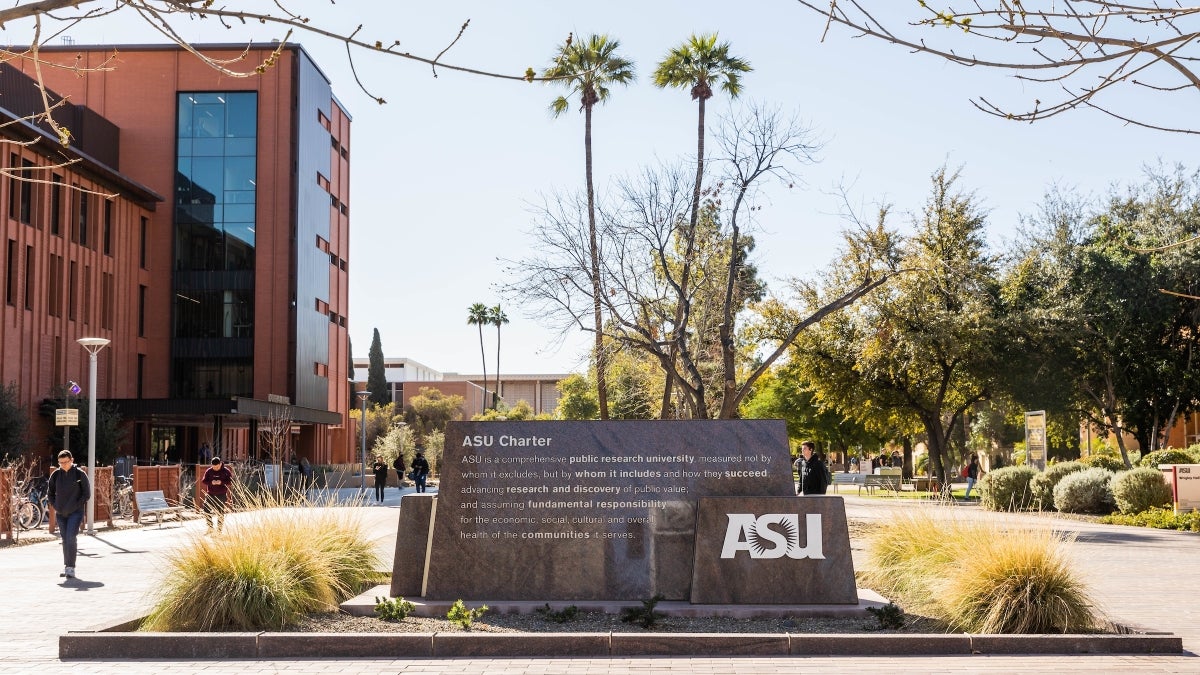Researchers at Arizona State University have earned five National Science Foundation early career awards in the last year. The new awards total $2.8 million in funding for ASU researchers in grants that will be used over five years.
The awards show the scope of research being undertaken at ASU and the level of creativity exhibited by each recipient. The work covers a wide variety of science and technology, from improving the performance and reliability of electrical systems to designing new molecules using bio-nanotechnology to advancing new interventions aimed at empowering youth in the juvenile justice system.
The NSF’s Faculty Early Career Development (CAREER) Program identifies the nation’s most promising young faculty members and provides them with funding to pursue outstanding research, excellence in teaching and integration of education and research. Often, these awards spur the creativity of the faculty member and help set them on an innovative career path.
"On behalf of the entire ASU academic community, I extend my congratulations to our latest recipients of the NSF CAREER award," said Nancy Gonzales, executive vice president and university provost. "These five scholars, representing a breadth of scholarly disciplines, contribute to ASU's growing count of more than 220 professors who have received this distinction. This remarkable accomplishment underscores the depth of early career talent that comprises our exceptional ASU faculty."
Here is a look at the most recent ASU NSF CAREER award recipients:
Adam Fine, assistant professor, School of Criminology and Criminal Justice
Fine is a developmental psychologist conducting research at the intersection of psychology, law, public policy and criminology. His work aims to test new ways to empower youths to thrive beyond the juvenile justice system. Fine’s research will develop and test a novel theoretical framework, called the Integrated Youth Development Model, that demonstrates how interdisciplinary approaches can be integrated and distilled into a workable set of core tenets that promotes thriving among justice-involved youths. Read more
Ayan Mallik, assistant professor, The Polytechnic School
Mallik is an electrical engineer whose research seeks to improve the performance and reliability of electrical systems. His project will focus on building an algorithm that can identify and analyze electrical signals or noise produced as a result of electromagnetic interference. Identifying and analyzing electromagnetic interference noise can help detect flaws in electrical systems and address them early on. This approach aims to help maximize the capabilities of electrical systems and reduce development risks for power equipment suppliers. Read more
Petr Šulc, assistant professor, School of Molecular Sciences
Šulc is an interdisciplinary scientist who applies statistical physics and computational modeling methods to problems in chemistry, biology and nanotechnology. His research aims to develop new multiscale models to study interactions between biomolecules, particularly in the context of design and simulations of DNA and RNA nanostructures and devices. Šulc is designing molecules with promising new applications including in diagnostics, therapeutics and new materials. Read more
Ruijie Zeng, assistant professor, School of Sustainable Engineering and the Built Environment
Zeng’s research aims to reengineer agricultural drainage infrastructure to aid in better water resource management and conservation efforts. His project involves mapping agricultural drainage networks using drones and multispectral imagery to analyze surface soil moisture patterns and help indicate where drainage is occurring. Zeng’s research will provide a tool for decision-makers and stakeholders to talk with individual farmers to develop and advance additional water conservation programs. Read more
Houlong Zhuang, assistant professor, School for Engineering of Matter, Transport and Energy
Zhuang is conducting research at the intersection of alloy design and artificial intelligence. His project will build on his work by combining alloy design and quantum computing to create quantum algorithms that aid researchers in developing new materials. These algorithms will be implemented using quantum hardware that produces the simulations of the bonds between select elements to predict the best possible combinations of elements to achieve a given material property. Read more
More Science and technology

Breakthrough copper alloy achieves unprecedented high-temperature performance
A team of researchers from Arizona State University, the U.S. Army Research Laboratory, Lehigh University and Louisiana State University has developed a groundbreaking high-temperature copper alloy…

4 ASU researchers named senior members of the National Academy of Inventors
The National Academy of Inventors recently named four Arizona State University researchers as senior members to the prestigious organization.Professor Qiang Chen and associate professors Matthew…

Transforming Arizona’s highways for a smoother drive
Imagine you’re driving down a smooth stretch of road. Your tires have firm traction. There are no potholes you need to swerve to avoid. Your suspension feels responsive. You’re relaxed and focused on…


